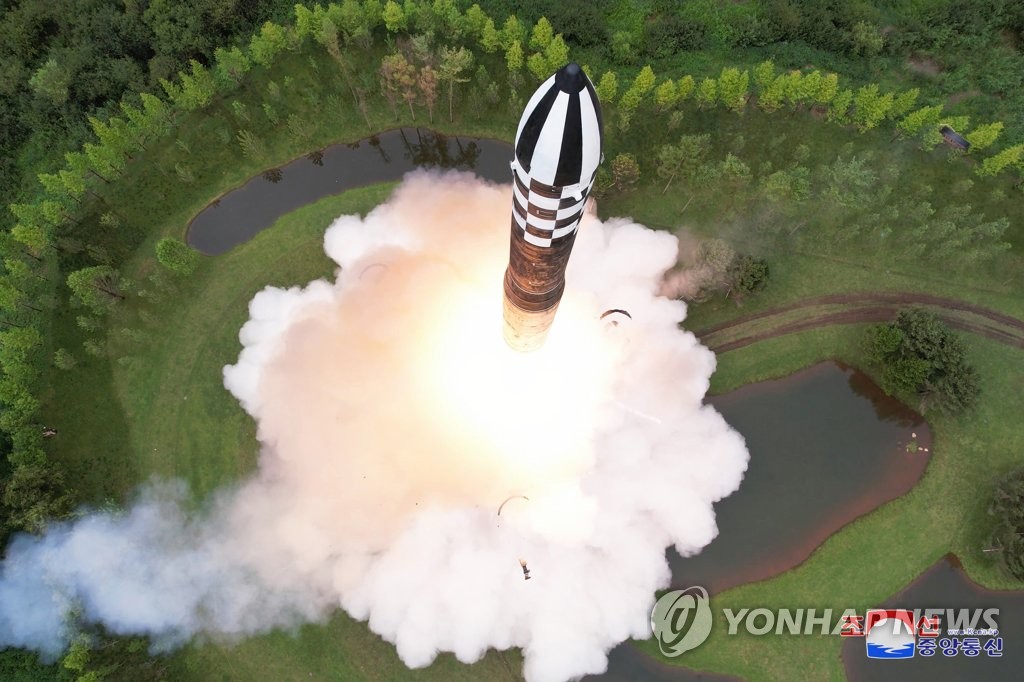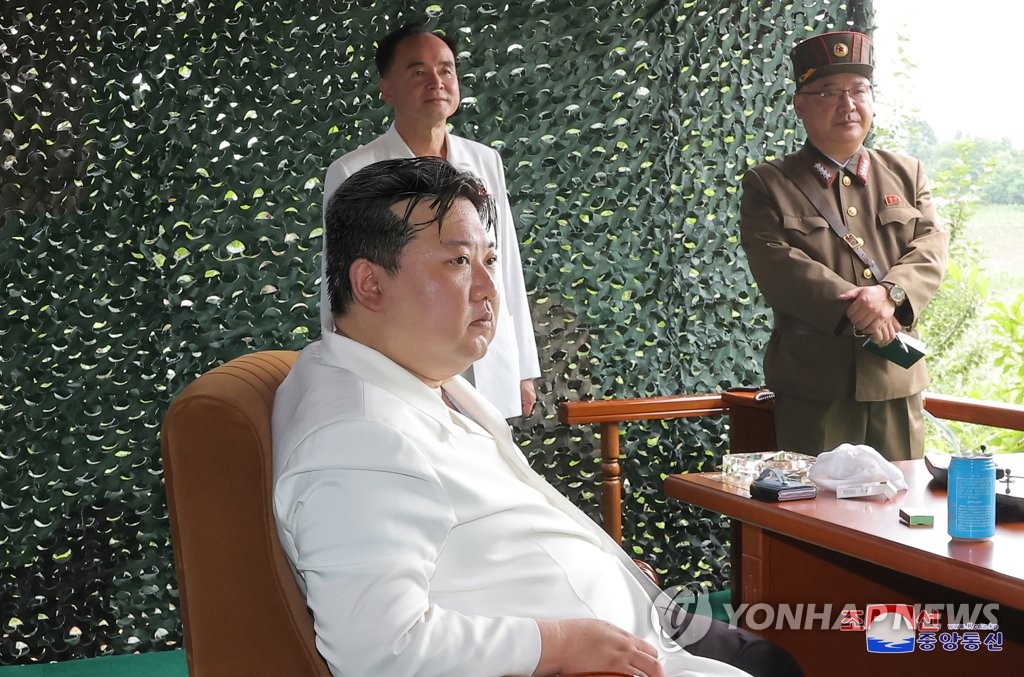(2nd LD) N Korea-ICBM launch
 |
| ▲ This photo, carried by North Korea's Korean Central News Agency on July 13, 2023, shows the North's firing of a Hwasong-18 solid-fuel intercontinental ballistic missile the previous day. (For Use Only in the Republic of Korea. No Redistribution) (Yonhap) |
 |
| ▲ This photo, carried by North Korea's Korean Central News Agency on July 13, 2023, shows the North firing of a Hwasong-18 solid-fuel intercontinental ballistic missile the previous day. (For Use Only in the Republic of Korea. No Redistribution) (Yonhap) |
 |
| ▲ This photo, carried by North Korea's Korean Central News Agency on July 13, 2023, shows the North's leader Kim Jong-un conducting a field guidance for a test-firing of a Hwasong-18 solid-fuel intercontinental ballistic missile the previous day. (For Use Only in the Republic of Korea. No Redistribution) (Yonhap) |
(2nd LD) N Korea-ICBM launch
(2nd LD) N. Korea confirms test-firing of Hwasong-18 solid-fuel ICBM
(ATTN: UPDATES with more details throughout; CHANGES photos; ADDS byline)
By Kim Soo-yeon
SEOUL, July 13 (Yonhap) -- North Korea said Thursday it test-fired a Hwasong-18 solid-fuel intercontinental ballistic missile (ICBM) the previous day, with its leader Kim Jong-un vowing to take "stronger" military offensive until the United States abandons its hostile policy against Pyongyang.
Guided by its leader Kim, the North launched a new type of the Hwasong-18 missile in a test aimed at reconfirming the technical creditability and operational reliability of the country's core weapon system, according to the official Korean Central News Agency (KCNA).
It marked the North's second solid-propellant ICBM launch following its first test-firing on April 13.
"The test-fire is an essential process aimed at further developing the strategic nuclear force of the Republic and, at the same time, serves as a strong practical warning to clearly show the adversaries of the DPRK," the KCNA said, using the acronym of the North's official name, the Democratic People's Republic of Korea.
The missile test came as North Korea issued sharp-tongued statements earlier this week condemning U.S. surveillance flights over its "economic water zone," threatening to shoot down American spy planes in case of a "repeated illegal intrusion."
The North said the Hwasong-18 flew 1,001.2 kilometers for 4,491 seconds at a maximum altitude of 6,648.4 km, before accurately landing on a pre-set area in the East Sea.
Its flight time was the longest ever for a North Korean ICBM, and if fired on a standard trajectory, the missile could have flown more than 15,000 km, a capability that would put the whole of the U.S. mainland within range, according to experts.
The South Korean military said Wednesday that a long-range ballistic missile, fired at a lofted angle from Pyongyang areas, traveled around 1,000 km before splashing into the water.
The North's leader Kim said the latest missile launch is part of the regime's efforts to bolster self-defense against the "disaster of a nuclear war" and reckless military moves by the U.S. and South Korea.
He reaffirmed "a series of stronger military offensive will be launched until the U.S. imperialists and the South Korean puppet traitors admit their shameful defeat of their useless hostile policy toward the DPRK in despair and give up their policy," the KCNA said.
A solid-fuel ICBM is one of the high-tech weapon systems that the recalcitrant regime has vowed to develop, along with a military spy satellite and a nuclear-powered submarine.
Solid-fuel missiles are known to be harder to detect ahead of launch than liquid-propellant ones, which require more prelaunch preparations, such as the injection of fuel.
The secretive regime has been striving to develop a solid-fuel ICBM as part of efforts to strengthen its nuclear delivery capabilities, as Seoul and Washington seek to improve the credibility of America's "extended deterrence."
Extended deterrence refers to Washington's readiness to use the full range of its military capabilities, including nuclear, to defend its ally.
North Korea said the regional security situation has reached the phase of a "nuclear crisis beyond the Cold War," denouncing the allies' summit declaration adopted in April.
The U.S. had pledged to send a nuclear ballistic missile submarine to the peninsula in a joint declaration issued by President Yoon Suk Yeol and U.S. President Joe Biden during their summit in April as part of efforts to deter Pyongyang's military threats.
The North's latest saber-rattling followed its botched launch of a space rocket carrying its first military reconnaissance satellite in late May. The rocket crashed into the Yellow Sea after an "abnormal starting" of the second-stage engine, according to the North's state media.
Why North Korea's latest missile test is even more threatening to the U.S.[https://youtu.be/yIHKzvnO5p8]
(END)
(C) Yonhap News Agency. All Rights Reserved




























![[가요소식] 재주소년 콘서트](/news/data/20251113/yna1065624915925440_516_h2.jpg)









